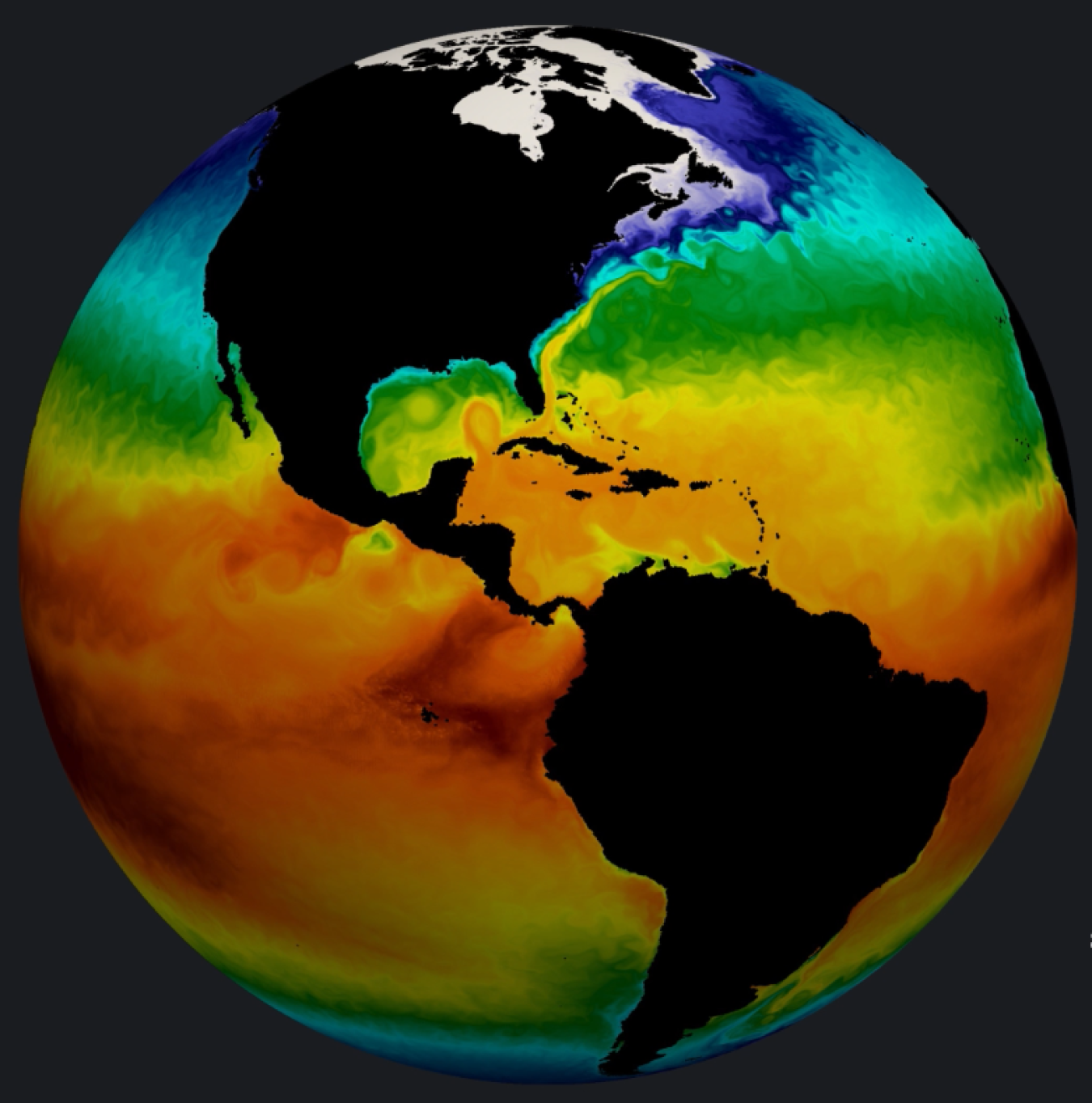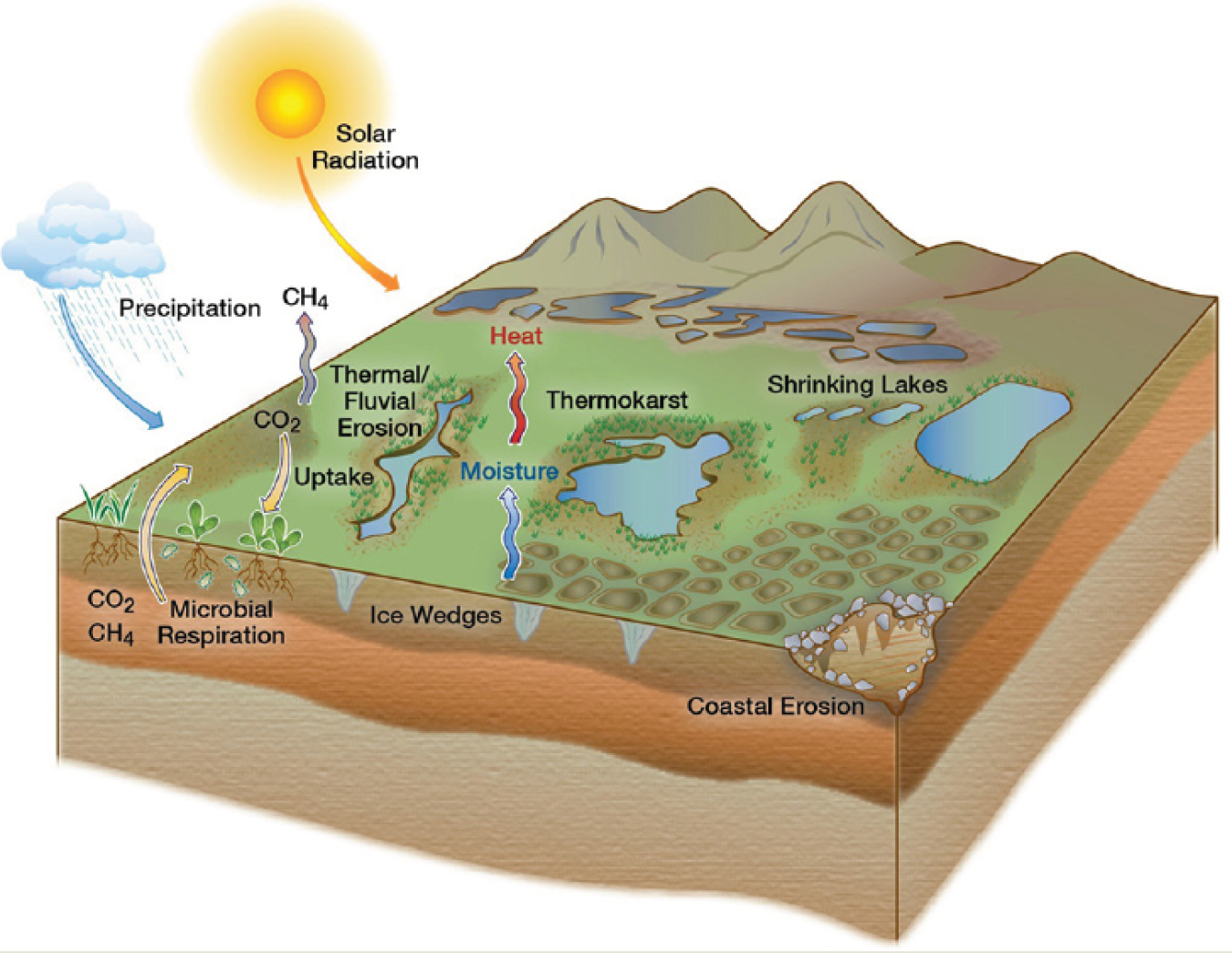DOE invests in research to understand the Arctic’s importance to our Earth’s overall sustainability. These Arctic projects funded by the DOE Office of Science include: Atmospheric Radiation Measurement, Energy Exascale Earth System Model and NGEE Arctic.
April 18, 2022

On Earth Day, look north to the Arctic! DOE invests in research to better understand the Arctic’s importance to our Earth’s overall sustainability.
Let’s explore some of the Arctic projects funded by the DOE Office of Science:
Atmospheric Radiation Measurement
What do changes in the Earth’s atmosphere mean for the Arctic and the planet’s future? DOE lab researchers and university scientists are looking for the answers in clouds, precipitation patterns and ice data from the north slope of Alaska. Data from fixed instruments, balloons, unmanned aircraft—and even a snowflake camera—at the ARM observatories on the North Slope of Alaska have given scientists insight into weather patterns, air/water temperatures, and sea ice. For example, they collected data on how liquid and ice in Arctic clouds act as blankets to warm the surface by reducing the cooling that happens naturally by radiation into space. Their research--conducted year-round, often in darkness and in sub-zero temperatures--is critical to our ability to predict and understand climate change impacts. .

Energy Exascale Earth System Modeling (E3SM)
Climate forecasting accuracy is dramatically increasing with high performance supercomputers at the national labs that analyze global climate data at resolutions 30 times finer than previous typical resolution for global climate models. Scientists can capture weather events, such as cold snaps, with more accuracy.
With more accurate data on weather variables--including snowfall, humidity, sunlight, and wind--they can more accurately model climate change impacts. For example, the models can help researchers predict Arctic air and water temperatures that lead to sea ice retreat and sea-level rise, and forecast coastal flooding, which can impact Arctic ports, fishing operations, or community infrastructure.


Next-Generation Ecosystem Experiments (NGEE Arctic)
Data collected from Arctic tundra, forests and permafrost areas will improve understanding of how climate change affects Arctic vegetation. Experiments conducted near Utqiaġvik and Nome shed light on how water, nitrogen, carbon, and energy interact. Understanding these links between land, precipitation, and vegetation enables scientists to better predict how plants—and the Earth’s ecosystems--will respond to future climate change.
For example, warmer summers and increased permafrost melting can lead colder water to flow into Arctic streams, affecting vegetation and the wildlife depending on it. Lab researchers hope to better understand if and where the Arctic becomes wetter or drier, and the implications for ecosystems throughout Alaska and around the world.
By gathering and analyzing the data from these and other Arctic-related projects, scientists are working to help us answer questions that are vital to our energy future. Making decisions about our future energy generation, transmission and delivery begins with accurate forecasting and data.
Carolyn Hinkley

Carolyn Hinkley is a communication specialist in the Office of Electricity (OE). In this role, she helps to manage executive communications and internal and external communications, including OE's website.
She previously served as the Acting Communications Director for the Arctic Energy Office, where she managed all aspects of external and internal communications for DOE's only placed-based office in Alaska. Her role included representing Alaska Native concerns on DOE's Tribal Energy Steering Committee. Carolyn joined the Arctic Energy Office from the Office of Energy Efficiency and Renewable Energy (EERE)'s communications team, where she managed the organization's multiple websites and oversaw stakeholder outreach tools and digital best practices. In this role, she also edited a national renewable energy newsletter and provided executive communication support to the organization’s senior leaders.
Before joining EERE, Carolyn provided public affairs support to Western Area Power Administration, specifically in the areas of hydropower generation and transmission and marketing.
She earned a bachelor's degree in journalism and Spanish from the University of Colorado at Boulder, and a master's degree in information and communication technology from the University of Denver.

